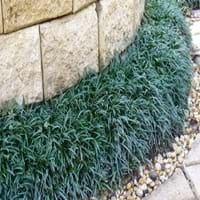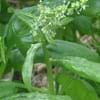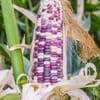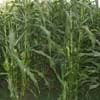Life Span
Annual
Perennial
Origin
Southern Asia
Japan
Types
Savoy, Giant Noble, Semi-savoy
Not Available
Number of Varieties
Not Available
Habitat
Fields, gardens, meadows, Suburban areas
Damp shady woods, foothill woods, Lowland
USDA Hardiness Zone
Not Available
6-11
AHS Heat Zone
Not Available
12-1
Sunset Zone
Not Available
H1, H2, 5, 6, 7, 8, 9, 14, 15, 16, 17, 18, 19, 20, 21, 22, 23, 24
Habit
Rosette/Stemless
Clump-Forming
Flower Color
Yellow, Green
White, Lavender
Flower Color Modifier
Bicolor
Bicolor
Fruit Color
Tan, Black
Indigo, Dark Blue, Black
Leaf Color in Spring
Green, Dark Green
Dark Green
Leaf Color in Summer
Not Available
Dark Green
Leaf Color in Fall
Green, Dark Green
Dark Green
Leaf Color in Winter
Green, Dark Green
Light Green
Leaf Shape
Ovate
Grass like
Plant Season
Not Available
Spring, Summer, Fall, Winter
Sunlight
Full Sun
Full Sun, Partial Sun, Partial shade
Growth Rate
Very Fast
Medium
Type of Soil
Loam, Sand
Loam
The pH of Soil
Neutral, Alkaline
Acidic, Neutral
Soil Drainage
Well drained
Well drained
Bloom Time
Not Available
Late Spring, Early Summer, Summer
Tolerances
Drought
Drought
Where to Plant?
Ground, Pot
Ground
How to Plant?
Seedlings
Root Division
Plant Maintenance
Medium
Medium
Watering Requirements
Requires regular watering
Regular watering during dry periods
In Summer
Lots of watering
Lots of watering
In Spring
Moderate
Moderate
In Winter
Average Water
Average Water
Soil pH
Neutral, Alkaline
Acidic, Neutral
Soil Type
Loam, Sand
Loam
Soil Drainage Capacity
Well drained
Well drained
Sun Exposure
Full Sun
Full Sun, Partial Sun, Partial shade
Pruning
Remove damaged leaves, Remove dead branches, Remove dead leaves
Remove damaged leaves, Remove dead branches, Remove dead leaves
Fertilizers
Fertilize when new
All-Purpose Liquid Fertilizer
Pests and Diseases
Downy mildew, Leafminers, Red blotch, Seedcorn maggot
Not Available
Plant Tolerance
Cold climate, Drought
Drought
Flower Petal Number
Not Available
Single
Foliage Texture
Medium
Medium
Foliage Sheen
Glossy
Glossy
Attracts
Not Available
Hummingbirds
Allergy
Food Allergy
Asthma
Aesthetic Uses
Not Used For Aesthetic Purpose
Borders
Beauty Benefits
Not Available
Not Available
Environmental Uses
Air purification
Air purification
Medicinal Uses
Energy, Potassium, Rich in Iron, Vitamin A, Vitamin C, Vitamin E, Vitamin K
Antipyretic, Antiscrophulatic, Antitussive, Aphrodisiac
Part of Plant Used
Leaves, Stem
Root
Other Uses
Used As Food, Used for its medicinal properties
useful as a ground cover
Used As Indoor Plant
Yes
No
Used As Outdoor Plant
Yes
Yes
Garden Design
Container, Edible, Herb, Vegetable
Container, Edging, Groundcover, Mixed Border, Rock Garden, Wall
Botanical Name
SPINACIA oleracea
OPHIOPOGON japonicus
Common Name
Spinach
Mondo grass, lily turf, snakebeard
In Hindi
पालक
Mondo Grass
In German
Spinat
Mondo Grass
In French
Épinards
Mondo Grass
In Spanish
Espinacas
Ophiopogon planiscapus
In Greek
Σπανάκι
Mondo Grass
In Portuguese
Espinafre
Mondo Grass
In Polish
Szpinak
Mondo Grass
In Latin
Spinach
Mondo Grass
Phylum
Magnoliophyta
Embryophyta
Class
Magnoliopsida
Liliopsida
Order
Caryophyllales
Liliales
Family
Chenopodiaceae
Liliaceae
Genus
Spinacia
Ophiopogon
Clade
Angiosperms, Core eudicots, Eudicots
Angiosperms, Monocots
Tribe
Anserineae
Not Available
Subfamily
Chenopodioideae
Not Available
Number of Species
Not Available
Not Available
Difference Between Spinach and Mondo Grass
If you are confused whether Spinach or Mondo Grass are same, here are some features about those plants to help you choose better. Many people think that these two plants have the same characteristics, but one can see Spinach and Mondo Grass Information and learn more about it. Fertilizers required for proper growth of Spinach are Fertilize when new, whereas for Mondo Grass fertilizers required are All-Purpose Liquid Fertilizer. Hence, one should know the basic difference between Spinach and Mondo Grass if you are planning to have them in your garden to enhance its beauty.
<
Flowering PlantsImportance of Spinach and Mondo Grass
Want to have the most appropriate plant for your garden? You might want to know the importance of Spinach and Mondo Grass. Basically, these two plants vary in many aspects. Compare Spinach and Mondo Grass as they differ in many characteristics such as their life, care, benefits, facts, etc. Every gardener must at least have the slightest clue about the plants he wants to plant in his garden. Compare their benefits, which differ in many ways like facts and uses. The medicinal use of Spinach is Energy, Potassium, Rich in Iron, Vitamin A, Vitamin C, Vitamin E and Vitamin K whereas of Mondo Grass is Antipyretic, Antiscrophulatic, Antitussive and Aphrodisiac. Spinach has beauty benefits as follows: Not Available while Mondo Grass has beauty benefits as follows: Not Available.
Compare Facts of Spinach vs Mondo Grass
How to choose the best garden plant for your garden depending upon its facts? Here garden plant comparison will help you to solve this query. Compare the facts of Spinach vs Mondo Grass and know which one to choose. As garden plants have benefits and other uses, allergy is also a major drawback of plants for some people. Allergic reactions of Spinach are Food Allergy whereas of Mondo Grass have Asthma respectively. Having a fruit bearing plant in your garden can be a plus point of your garden. Spinach has no showy fruits and Mondo Grass has no showy fruits. Also Spinach is not flowering and Mondo Grass is not flowering . You can compare Spinach and Mondo Grass facts and facts of other plants too.





